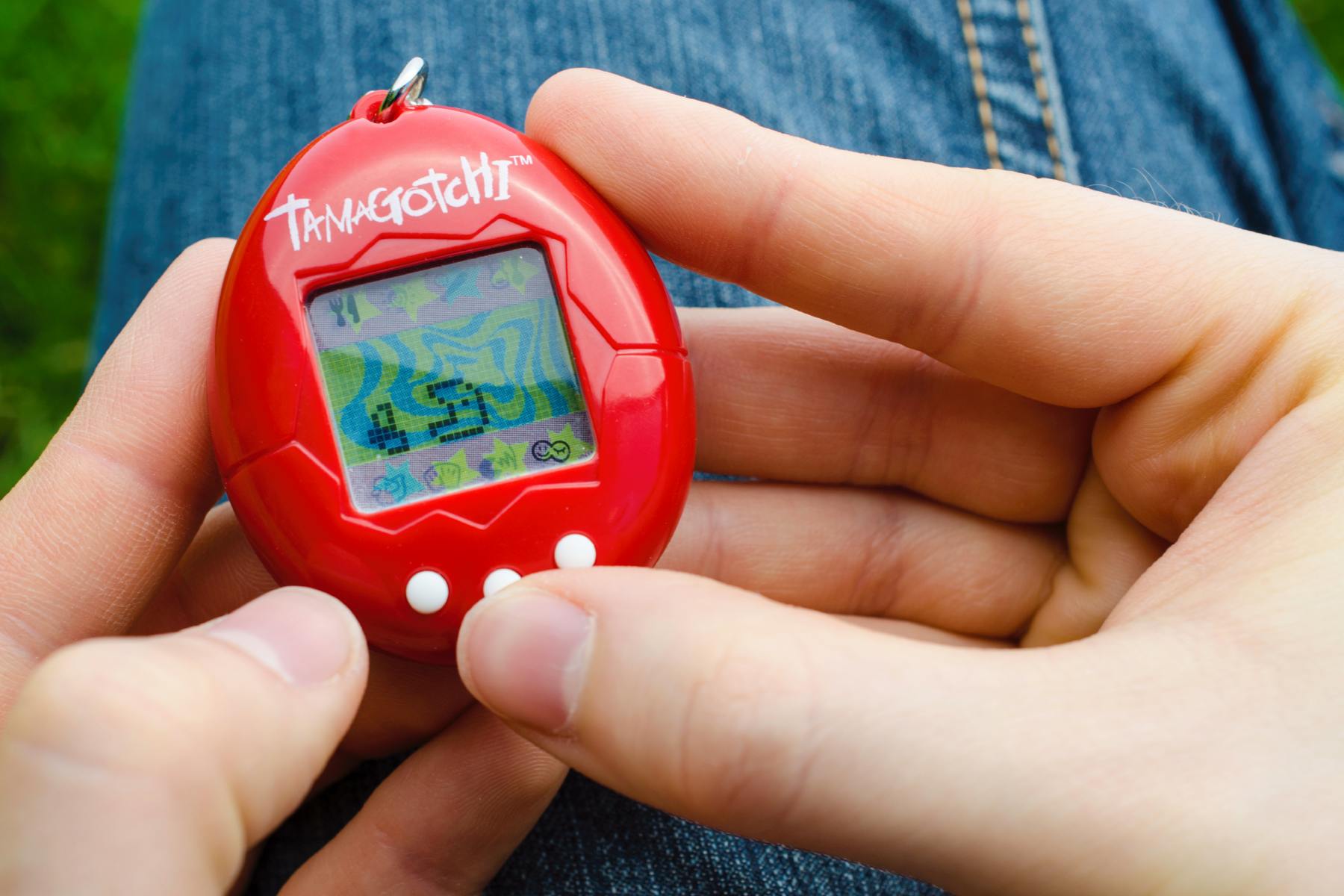
"W e hold our portable, personal media devices out at different angles to look back at us for taking photos or livestreaming. We tap, rub, and caress their glass faces to do and make things. We ask them questions or make requests through their voice-activated virtual assistants. And when they beep, chime, vibrate, or illuminate, we reflexively pick them up and hold them close."
"First introduced in Asia, toys such as Tamagotchi, released in 1996, and Giga Pets, released a year later, came in colourful, egg-shaped plastic cases. Tethered to key chains, these toys had three or four control buttons and a small screen about the size of a quarter. Tamagotchi's manufacturer, Japanese toy company Bandai, sold 400 million Tamagotchi worldwide within the toy's first year and a half. (By comparison, it took Apple five years to sell as many iPhones.)"
People engage with portable devices by angling them, tapping and caressing their screens, speaking to voice-activated assistants, and responding reflexively to beeps, chimes, vibrations, and lights. Psychological conditioning from 1990s virtual-pet toys such as Tamagotchi persists into the 2020s as the same generation adopts smartphones. Tamagotchi and Giga Pets launched in the mid-1990s as small, tethered devices with simple screens and buttons, achieving massive sales worldwide. Tamagotchi shifted growing games away from visual realism toward psychological impact, using unpredictable alerts to produce a convincing sense of life. These virtual pets require frequent user intervention.
Read at The Walrus
Unable to calculate read time
Collection
[
|
...
]